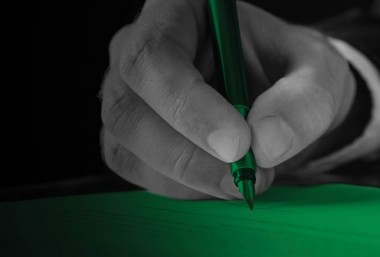Businesses often evolve over time. One natural evolution is to develop from a pure retailer of third party brands to one selling a mix of your own and third party branded products.
Such an evolution results in a change in the intellectual property (IP) the business owns, and the protection the brands need.
The best way to protect a brand is to register it as a trade mark. The registration should cover the services and the goods you use or intend to use the brand on. A regular check should be made to ensure the registrations held by your business for its brands protect those brands for the services and goods being offered, as the business evolves.
Protecting your brand further
If a trade mark registration was secured, when the business opened, that gives you the exclusive right to use your brand in relation to 'retail of clothing', you should look to protect your brand further if the business now uses the brand on its own line of clothing or clothing accessories.
That's not to say that a trade mark registration for BOBBY (for example) covering 'retail services' will not be infringed by someone using BOBBY as a clothing brand. But, the owner of the BOBBY 'retail services' registration will have to convince a court that the other person's use of BOBBY as a clothing brand is use of BOBBY on goods 'similar' to 'retail services' and likely to cause confusion in the market. Decisions both here and elsewhere suggest that this may not be entirely straightforward to prove.
What the courts have said is that whether use of a brand on a product is use on a similar item to a service for which the brand is registered depends on the relationship between the product and service. And whether the public will automatically think the two party's brand use is related.
As an example, if a high street ladies clothing retailer has a trade mark registration for BOBBY for 'retail services' and another person uses BOBBY as a ladies clothing label, then there is a good chance such use would infringe the 'retail' registration. This is because there would be evidence to show that high street clothing retailers often use their retail brands as on-label brands. As a result, the court is likely to infer that people will automatically think the clothing comes from the BOBBY branded retail business.
However, the type of retail store and the type of clothing may be relevant in whether the court will find that infringement has occurred. If, for example the BOBBY retail store is a high street ladies fashion store and the BOBBY range of clothing is a range of ladies gym gear, the situation is less clear-cut. People may not automatically think there is a link between gym gear and the BOBBY branded high street retail store.
Equally, if the products being sold were sunglasses, evidence showing that retailers use their retail brands as sunglasses brands may be difficult to find.
Contrast this with the situation where the BOBBY retailer's trade mark registration covers both 'retail services' and the items it now sells under the BOBBY brand such as 'clothing' and 'sunglasses'. In that situation the use of BOBBY by someone else as a clothing brand or sunglass brand will in almost all cases be a clear case of trade mark infringement.
The moral of the illustration above is make sure your registered trade mark protection reflects your evolving interest in your brands and your business to ensure you are best positioned to stop misuse of your brands. Proper protection can lessen enforcement costs and provide a stronger deterrent to would be infringers.
Proper protection for an evolving brand
Looking ahead, it's also good business sense to protect your brands, one of your business's most valuable assets, properly. Doing so can increase the value of your business in the eye of investors.
Business evolution can also expose a business to new risks from a brand perspective that you should be aware of. While evolving from a retailer of third party brands to a retailer of your own brand may seem low risk, it can result in the use of the brand pushing up against other existing rights.
As an example, while a BOBBY branded clothing store and a BOBBIES branded optometrists might co-exist happily, issues may arise when both businesses launch their own range of sunglasses under their BOBBY/BOBBIES brands. Who has the right to move into the sunglasses space with the BOBBY/BOBBIES brand (assuming no one is already there with a confusingly similar brand) can depend on who got there first, or who has a trade mark registration covering 'sunglasses' or similar goods or services.
Observations
This leads to two observations about brand extension. The first is that you should always check that you can use your brand on a product before doing so. Don't assume natural evolution is available. Having 10,000 BOBBY branded pairs of sunglasses that you can't sell because of existing rights in BOBBIES is not ideal. Secondly, if it looks like you are free to use your brand on a particular product then apply to register your brand as a trade mark for those goods. If someone else files a trade mark application for your brand or a similar brand for 'sunglasses' while you are waiting for your first shipment of 10,000 sunglasses to arrive, you are going to be in a difficult position.
Finally, schedule time to compare your brand protection and brand evolution regularly. Don't leave it to happen 'naturally'. Make proper use of your IP advisor in that assessment. Tell them what you are doing and what you have planned for the brand. Proactively protecting your brand can save you money and unnecessary grief.
An edited version of this article was published in NZRetail magazine issue 704.